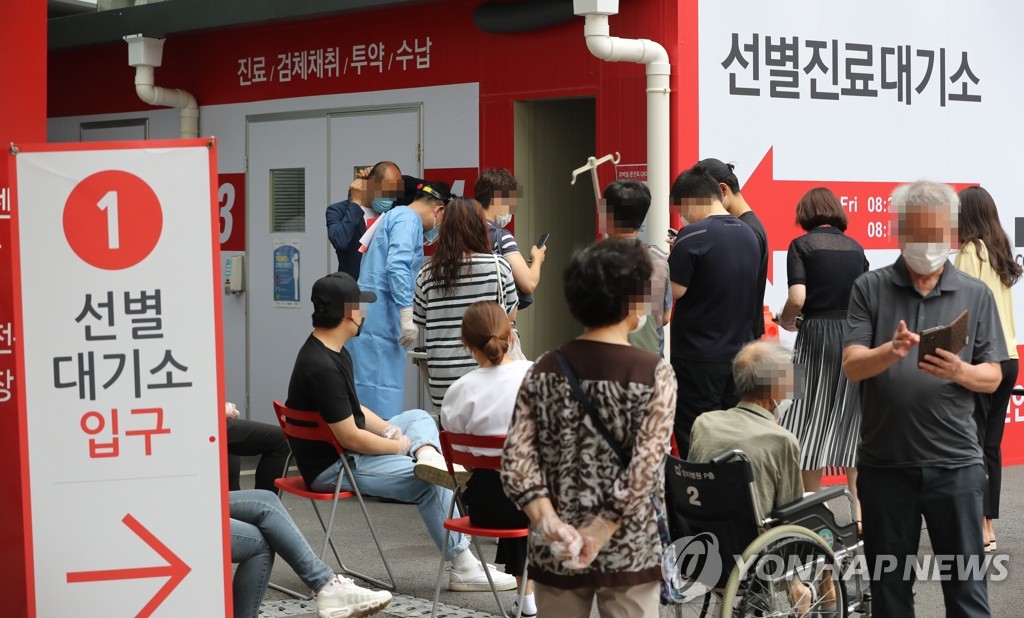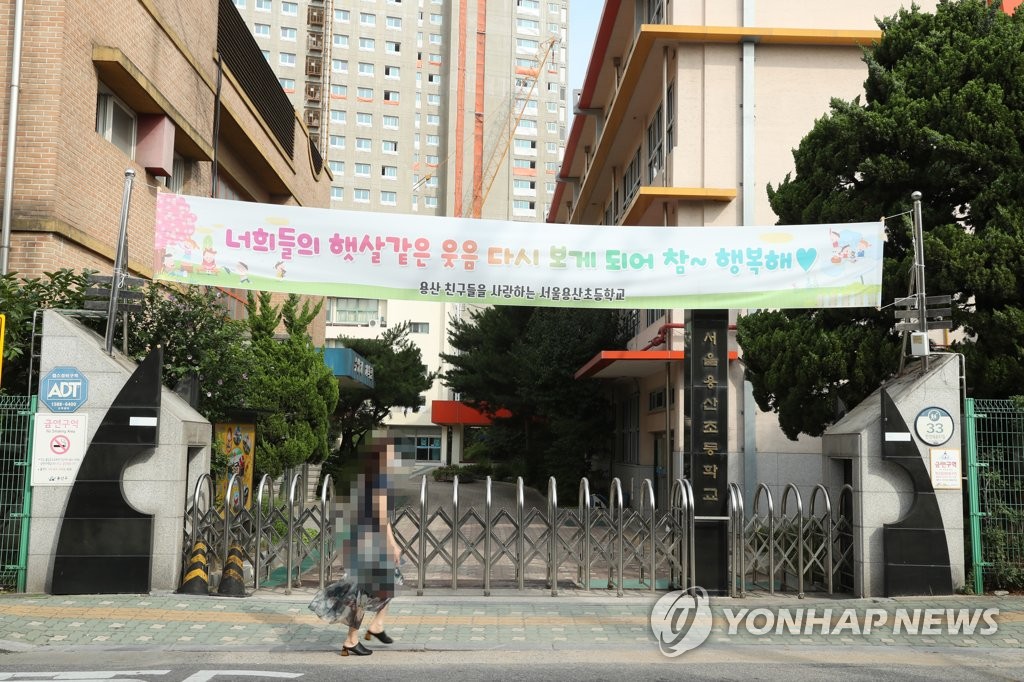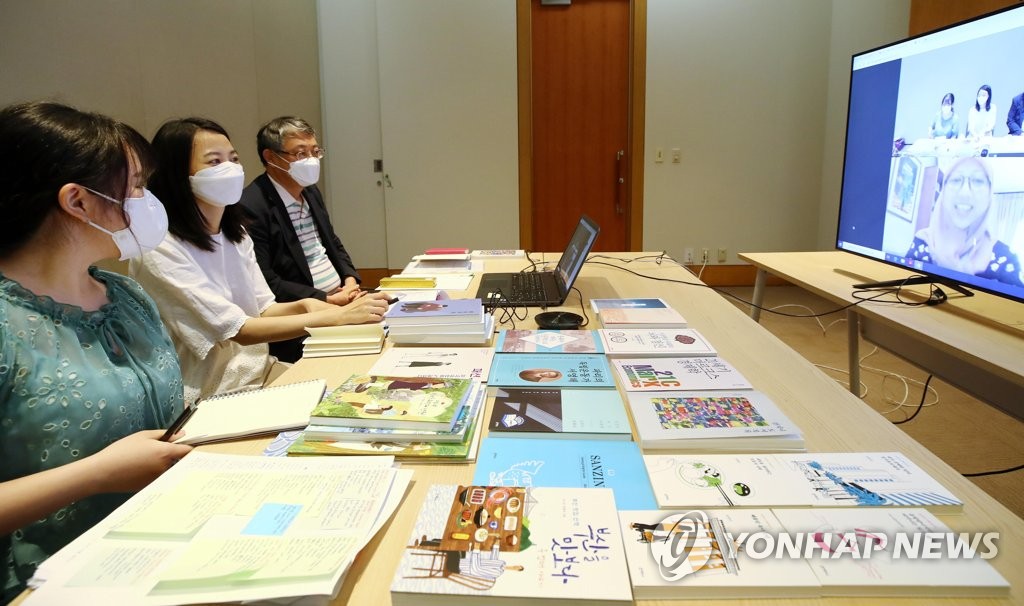- California Assembly OKs highest minimum wage in nation
- S. Korea unveils first graphic cigarette warnings
- US joins with South Korea, Japan in bid to deter North Korea
- LPGA golfer Chun In-gee finally back in action
- S. Korea won’t be top seed in final World Cup qualification round
- US men’s soccer misses 2nd straight Olympics
- US back on track in qualifying with 4-0 win over Guatemala
- High-intensity workout injuries spawn cottage industry
- CDC expands range of Zika mosquitoes into parts of Northeast
- Who knew? ‘The Walking Dead’ is helping families connect
New virus cases dip to below 50, cluster infections traced to churches in focus
South Korea’s new virus cases fell back to below 50 on Monday, but a continued rise in cluster infections, mostly tied to small-scale gatherings at churches, put further strain on the country’s virus fight.
Health authorities urged citizens to avoid gatherings and proposed staggered vacations during the summer season to stem further virus spread.
The country added 42 cases, including 30 local infections, raising the total caseload to 12,757, according to the Korea Centers for Disease Control and Prevention (KCDC).
The tally marked a sharp fall from 62 new cases of COVID-19 reported Sunday and 51 additional cases identified Saturday, which might be due to less testing over the weekend.
The country’s health authorities remain concerned about sustained rises in local infections and imported cases, which may trigger another wave of virus outbreak in the summer.
The total global virus caseload topped 10 million Sunday, less than seven months since the first reported outbreak in China late last year, as the virus is spreading at an alarming pace.



Citizens line up to receive new coronavirus tests at a screening center at a hospital in Seoul’s southwestern ward of Gwanak on June 29, 2020, as at least 28 virus cases tied to a major church in the district were reported. (Yonhap)
Of the locally transmitted cases, 21 cases were reported in densely populated Seoul and the surrounding area. Three new cases were reported in Gwangju, 329 kilometers south of Seoul, the KCDC said.
“Over the past two weeks, the portions of both cluster infections and imported cases remained high. That of cases whose infection transmissions are unknown has also risen to 11.8 percent,” KCDC Director Jeong Eun-kyeong said in a briefing.
Cluster infections tied to churches in the greater Seoul area have emerged as the bane of the country’s quarantine efforts.
Cases traced to a major church in Seoul’s southwestern ward of Gwanak reached 28 as of noon, up one case from the previous day. Those tied to a church in Anyang, south of Seoul, rose by four to 22.
At least 12 cases linked to a Buddhist temple in Gwangju were reported. Health authorities are conducting virus tests on 76 people for potential transmission.
Those linked to a door-to-door retailer in southern Seoul reached 210, up three over the past 24 hours.
“Infections tied to small gatherings have increased, making it hard to contain virus transmission. It is worrisome that the virus is spreading in regions beyond the Seoul metropolitan area,” Yoon Tae-ho, a senior health official, said in a briefing.
Yoon said the government is considering the adoption of measures to stem the virus spread at churches and other religious facilities.
The government remains cautious about designating religious facilities as “high-risk” places as critics regard the move as infringing on religious freedom.
South Korea has been dogged by rises in sporadic cluster infections in the greater Seoul area since it relaxed strict social distancing on May 6 on the back of the flattened virus curve.
Health officials warned that they may consider expanding tougher infection preventive measures — currently in place only in the Seoul metropolitan area — across the country if virus situations get worse.
The government unveiled a three-level social distancing scheme Sunday, saying that the country is currently at Level 1, under which the outbreak of daily new virus cases, mostly below 50, is manageable with the current medical system.
In an effort to stem the spread of the virus at vacation spots, health authorities plan to advise companies to let their employees extend the use of their summer vacation to early September.
They will also recommend that firms split lunch hours into two or three segments if they run in-house cafeterias.
The country reported 12 additional imported cases, raising the total such cases to 1,562.
At least 19 cases were connected to cluster infections on two Russia-flagged cargo ships docked at a port in the southeastern city of Busan.
Imported cases, once the main source of virus cases here, fell to a single-digit figure early this month after the country strengthened quarantine measures on all international arrivals in April.
But such cases have bounced back to double-digit numbers since mid-June.
Imported cases accounted for 34.1 percent of the total new virus cases reported over the past two weeks, according to the KCDC.
South Korea, meanwhile, reported no additional deaths, bringing the total death toll to 282. The fatality rate was 2.21 percent.
The total number of people released from quarantine after full recoveries stood at 11,429, up 65 from the previous day.
The country has carried out 1,259,954 tests since Jan. 3.












